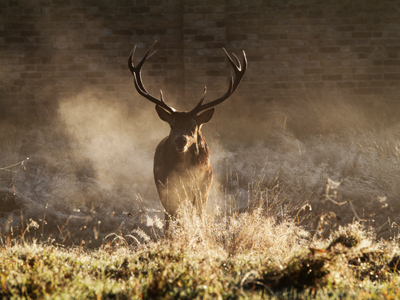Did you know that how frequently you take a breath is directly related to your age. Young, newborn babies breathe the fastest. They take anywhere from 30 to 60 breaths per minute.
This begins to slow down at about 6 weeks. On the flip side, resting adults take 12 to 20 breaths per minute and up to 45 when doing strenuous exercises.
Now let’s take a look at the internal organs that make up the respiratory system.
Respiratory Organs
The main organs of the respiratory system include the lungs, the airways and the diaphragm.
The lungs’ primary function is breathing in oxygen (which occurs during inhaling) and then breathing out carbon dioxide (which occurs during exhaling). The exchange of oxygen and carbon dioxide occurs in what is called the alveoli. Alveoli are tiny sacs in the lungs. The walls of the alveoli sacs are very thin and they are composed of a single layer of epithelial cells and pulmonary capillaries.
The airways include the nose and mouth that breathe air in and then wet it. The air is made moist because dry air causes irritation. The air then passes through the larynx (or voice box) to the trachea. The trachea, which is more commonly known as the windpipe, filters air as it is inhaled deeper into the body. It then passes the filtered air into the bronchi, which are two separate tubes that lead into the lungs. To prevent food from entering into the respiratory system, a thin flap of tissue called the epiglottis covers the windpipe as you swallow.
The diaphragm is located at the bottom of the lungs and is dome-shaped. It controls the actual process of breathing. As you breathe in, the diaphragm flattens out and pulls forward to make space in the lungs for the incoming oxygen. As you then exhale, the diaphragm expands forward and forces the now carbon dioxide air out of the body.
Diseases of the Respiratory System
Having a cold, or any illness for that matter, can affect the respiratory system but these are generally short-term irritants that the body is able to easily overcome. However, certain diseases of the respiratory system can be long term and even lead to death. Among just a few of the diseases of the respiratory system are:
Asthma (caused when the bronchi become inflamed due to smoke, allergens, fumes, colds, chemicals, foods, exercise and medicines)
Bronchitis (is the inflammation of the mucus membrane in the bronchi)
Chronic obstructive pulmonary disease (COPD) (caused by chronic bronchitis, chronic asthma, and emphysema)
Emphysema (is when the alveoli sacs in the lungs are destroyed, causing shortness of breath as the lungs cannot take in sufficient oxygen; it is a progressive disease that is not curable but can be controlled to some extent; however, it does often lead to death; smoking is the major cause of emphysema)
Lung cancer (this has been linked to smoking but it can affect non-smokers as well; it is caused by uncontrolled growth of abnormal cells in the lungs and/or body)
Why do we cough? Coughing is an involuntary reaction that is directly related to the respiratory system. Its main function is to remove dust, mucus, saliva and food from getting into the lungs.








